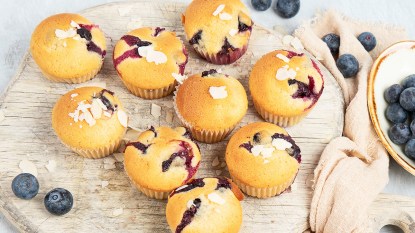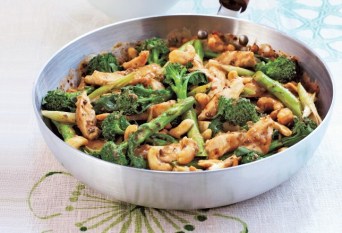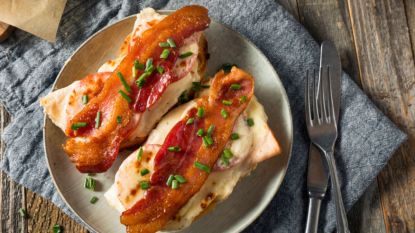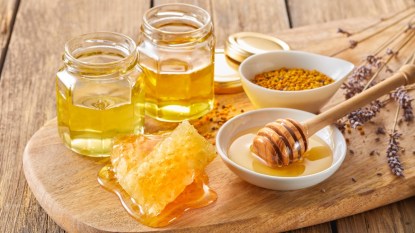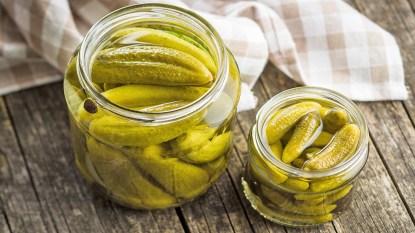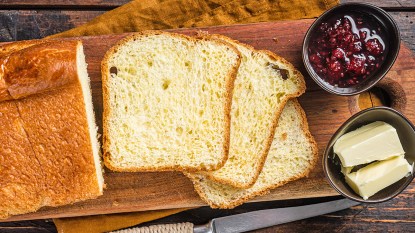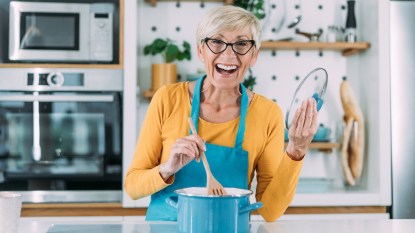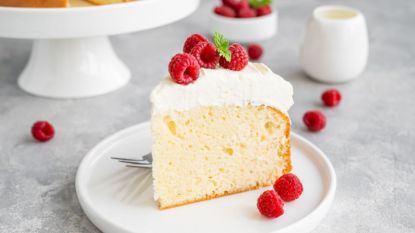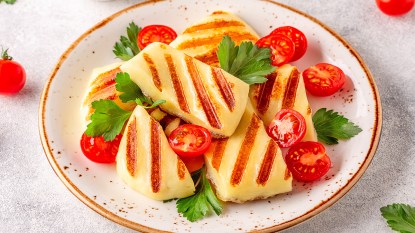Brown Bananas Making You Bananas? Extend Their Shelf Life and Ensure Optimal Ripeness This Way
Eat them when they're most a-peel-ing.
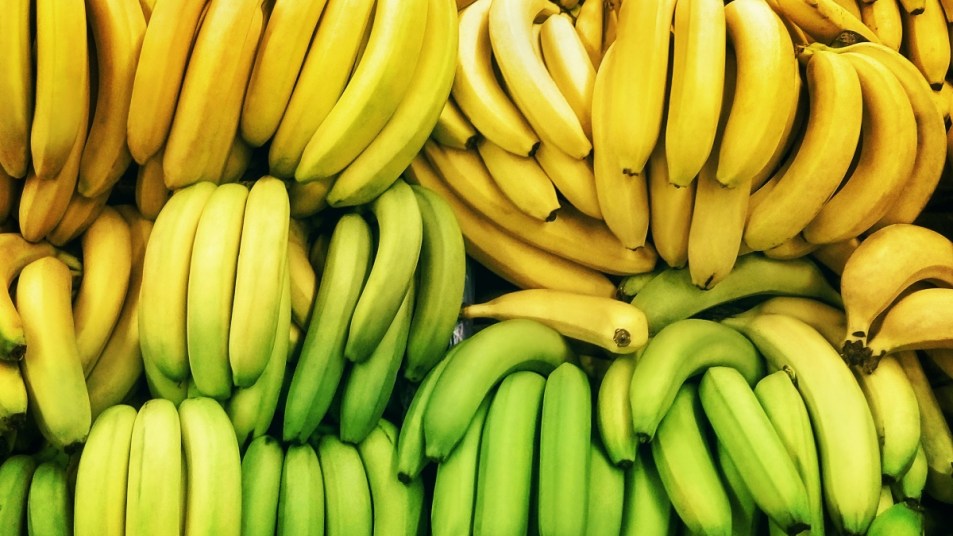
Bananas are a tropical gift to humanity. They’re portable, affordable, nutrient dense, and delicious — truly a fruit worth going bananas for. But have you ever bought a bunch of bananas on Monday, only to find them brown and mushy on Friday? Sure, you can make banana bread with overripe bananas — but more often than not, those leftovers end up in the trash. Because bananas ripen so quickly, it can be difficult to plan for their use. The below banana color guide can help; check it out to get the most banana for your buck.
Why do bananas ripen so fast?
Fruit ripens at different speeds, but bananas can go from green to brown especially fast. There’s science behind this: Bananas emit a hormone called ethylene gas, which speeds up ripening. In fact, they produce enough ethylene that placing bananas next to fruits like apples, avocados, and pears will make those ripen more quickly, too. Depending on your needs, you may want to be mindful of your banana’s countertop neighbors.
How should I store my bananas?
Yes, bananas’ shelf-lives are notoriously short. But the good news is that you can keep them fresh for longer by storing them strategically. Here’s how.
Wrap the stems: Ethylene gas is produced from the banana’s top stems, so blocking them off could promote slower ripening. Lifestyle blog A Spectacled Owl recommends wrapping the top stem in foil or plastic wrap and taping it down to extend your fruits’ lifespan.
Invest in a hanger: If bananas are a staple in your home, DIY or purchase a banana hanger (Buy from Amazon, $16.99). Banana hangers are standing hooks that suspend your bananas, above the counter. Lifestyle blog Cheap Simple Living says that banana hangers help keep the fruit fresh longer by promoting air circulation around them, which prevents ethylene buildup.
To fridge or not to fridge: You may remember the famous Chiquita banana commercial that featured a stylish cartoon ‘nanner crooning a warning: “Bananas like the climate of the very tropical equator, so you should never put bananas in the refrigerator.” (See a video of the original ’40s rendition below, but be prepared to have it stuck in your head for the rest of the day.) Ms. Chiquita may have had a point: Some experts claim that cold temperatures can cause loss of nutrients, aroma, and flavor, since bananas naturally grow in warmer climates. However, there are some conflicting opinions; A Spectacled Owl says that you can refrigerate fully ripe bananas, and while their peels will darken, their flesh will stay fresh. Even Dole confirms this theory. So really, the decision to refrigerate is between you and your bananas.
Banana Color Guide
Bananas’ lives are short (but sweet!). If you’ve been waiting until your bananas are a certain color before eating them, consider expanding your horizons. Different banana ripeness levels have different benefits, so you can actually enjoy them at almost every stage of life.
Green-Leaning
Many people think greener bananas aren’t ready to eat, but they actually have several nutritional benefits. Health website 1MD Nutrition says that green bananas are lower in sugar than fully yellow bananas, which makes them a great snack for anyone trying to lose weight or keep their blood sugar levels low. Inside Hook adds that green bananas are firmer, starchier, and packed with more fiber than their yellow counterparts, making them a filling and healthy option. According to The Healthy, greener bananas are also full of gut-healthy prebiotics.
Yellow
Yellow bananas are softer and easier to digest than green ones, making them a great choice for those with sensitive stomachs or digestion issues, says 1MD Nutrition. They’re also richer in disease-fighting antioxidants than green bananas. And because they’ve developed more sugars, they’re sweeter than a green-leaning banana, but not as sweet as a freckled one, which may be a draw for those who don’t like super-sweet snacks.
Yellow with Brown Freckles
When bananas get speckled with brown spots, they’re softer and sweeter. The previous firm starch has yielded into extra sugars, making these bananas a suitable substitute to processed sweets, says Inside Hook. They’re also packed with even more antioxidants than bananas at other ripeness stages, and consuming them regularly can promote healthier skin and lower cholesterol. Keep in mind, however, that while freckled bananas are easy on the stomach, they’re high on the glycemic index — so if you’re watching your blood sugar, consume them in moderation.
Brown
Many people think brown bananas have passed their prime and edibility, but they still have some benefits, says 1 MD Nutrition. Brown bananas contain stress-reducing tryptophan and are good for bone and muscle health (although their sugar content is quite high). Freeze them to sweeten your smoothies or make a yummy banana bread.
No matter when you eat them, one thing is clear: Bananas are filled to the brim with health benefits. Peel and enjoy!


